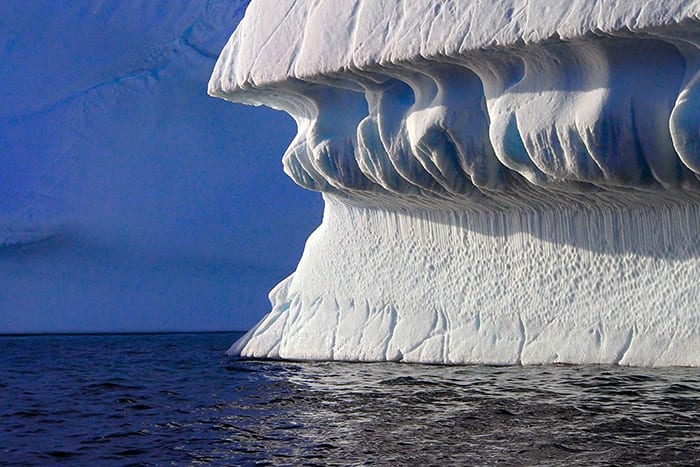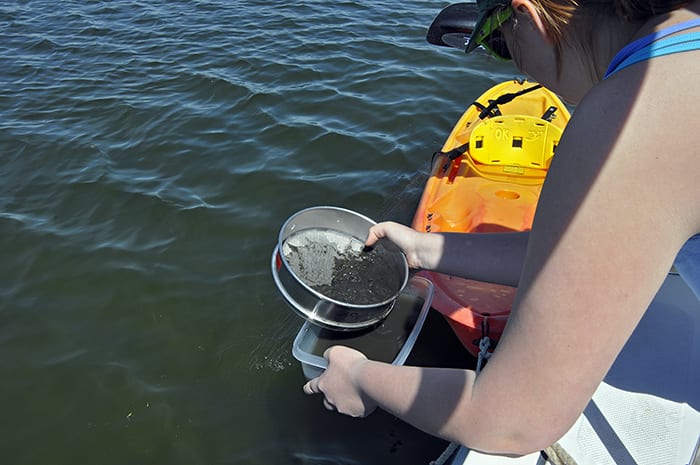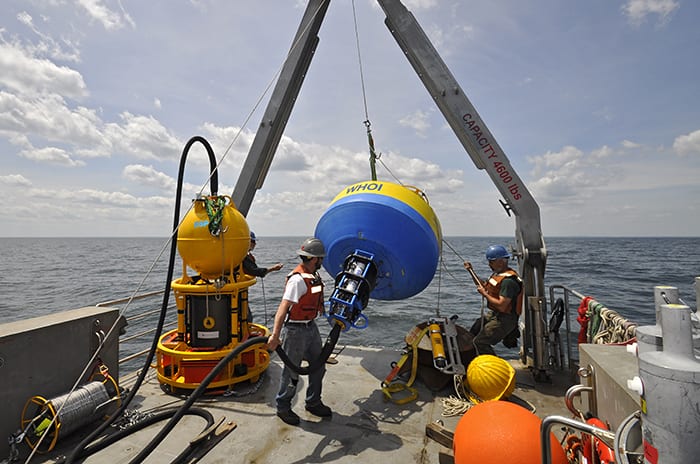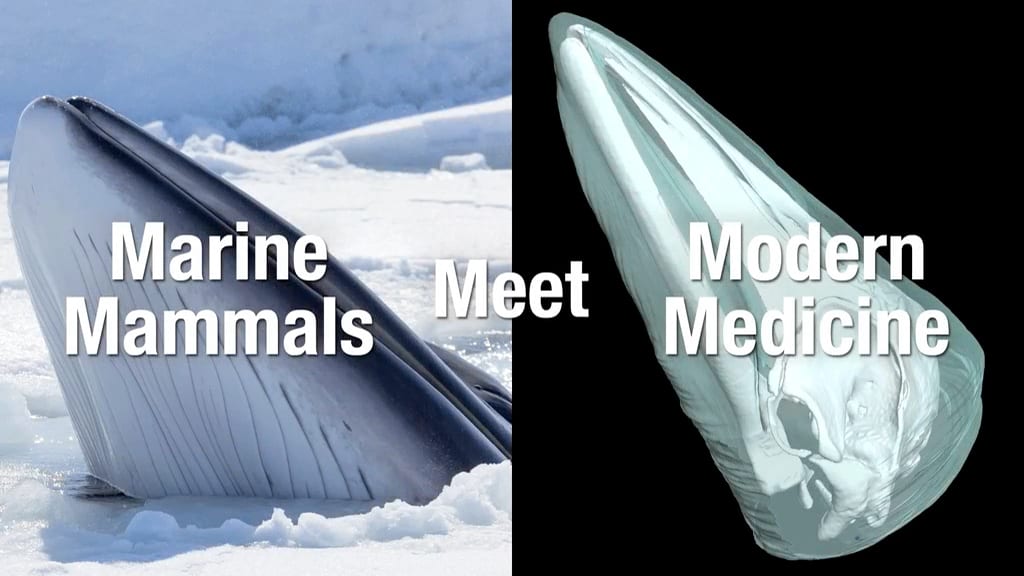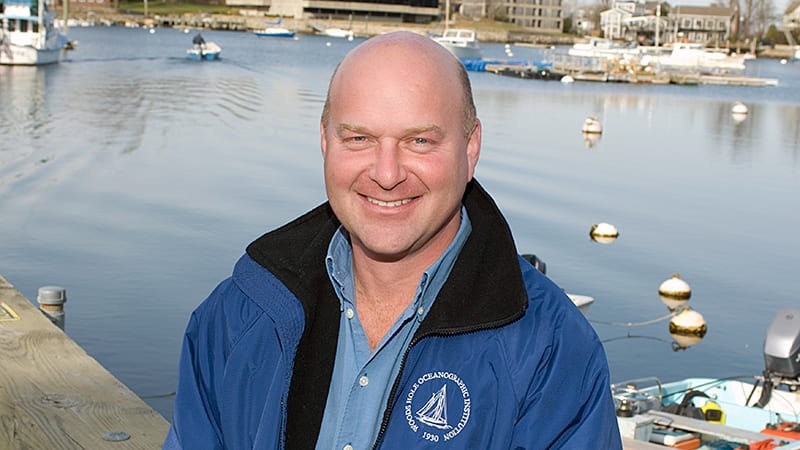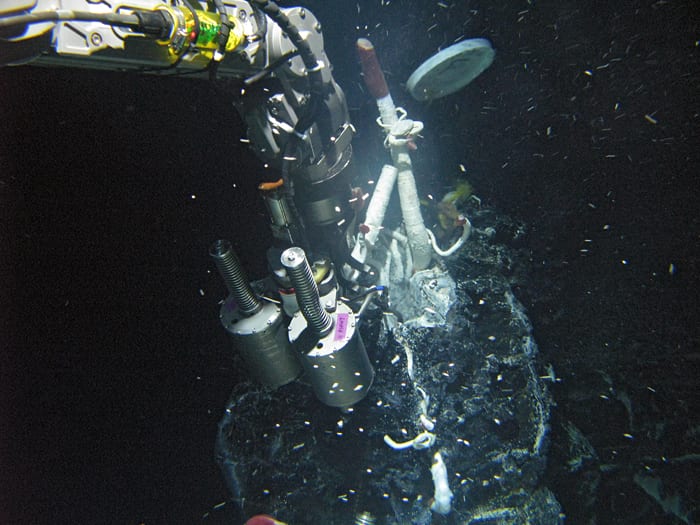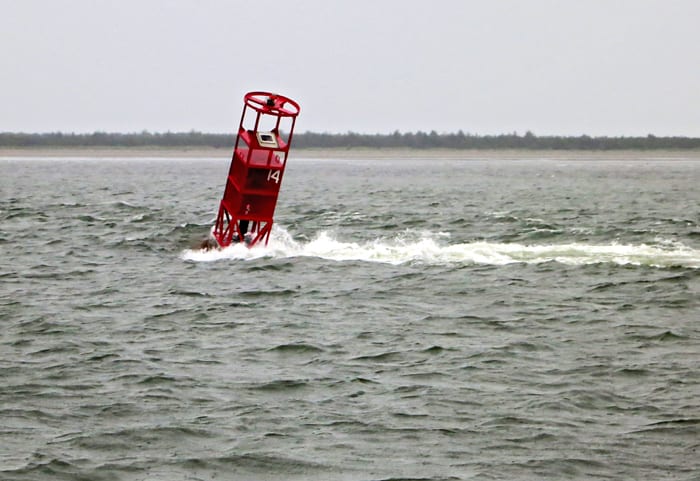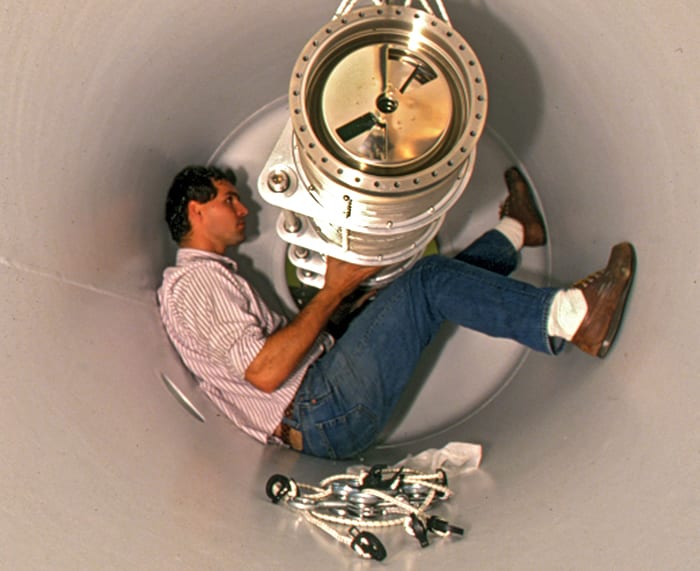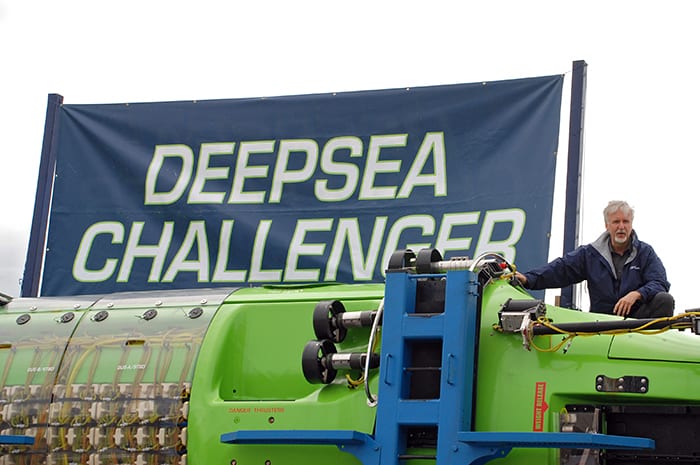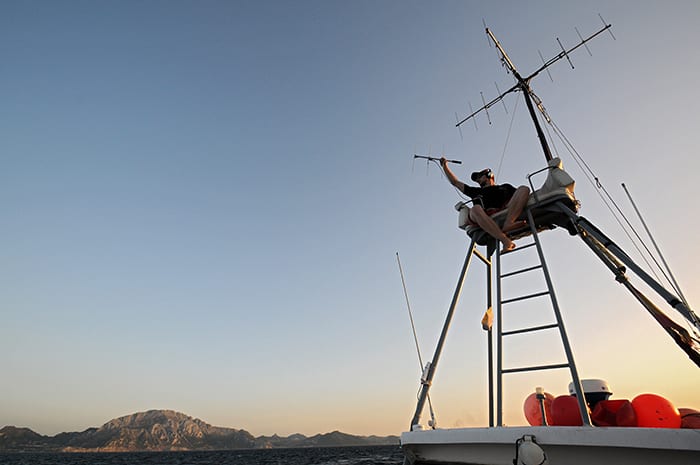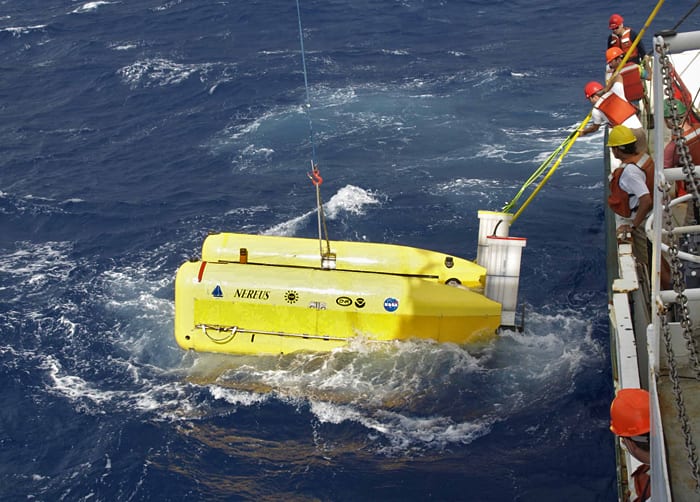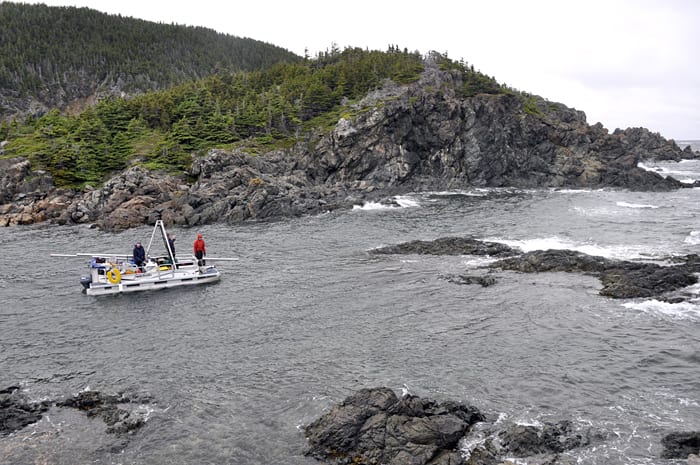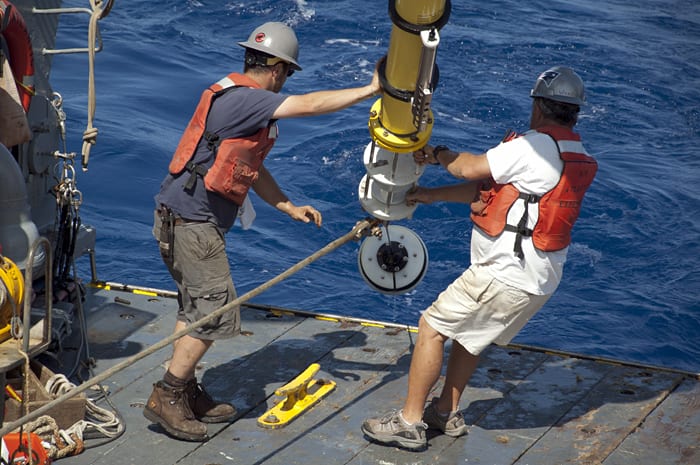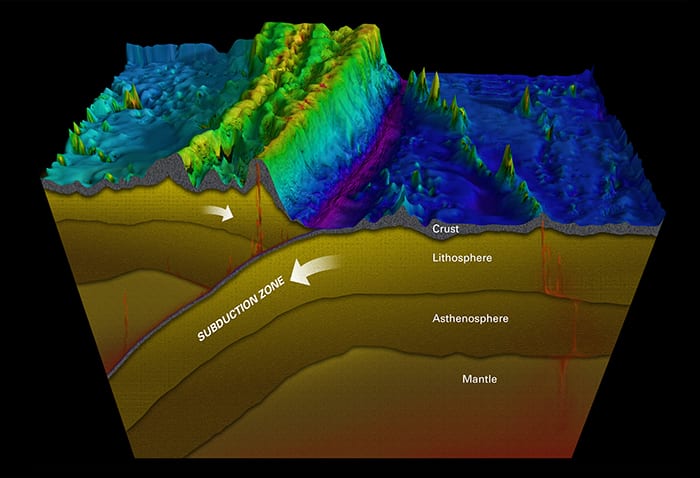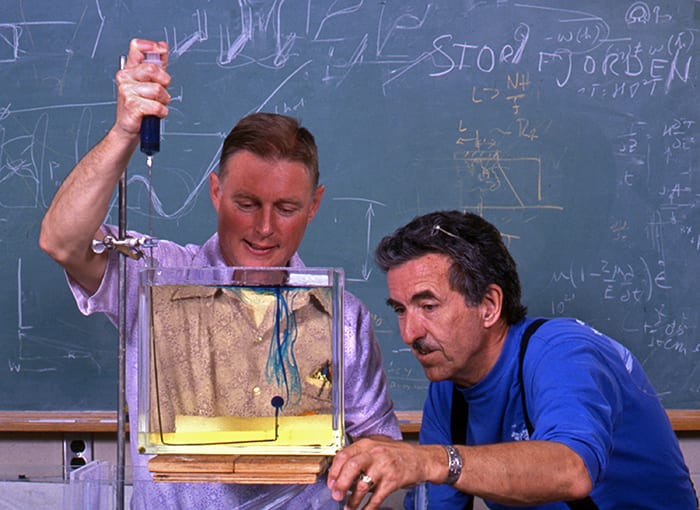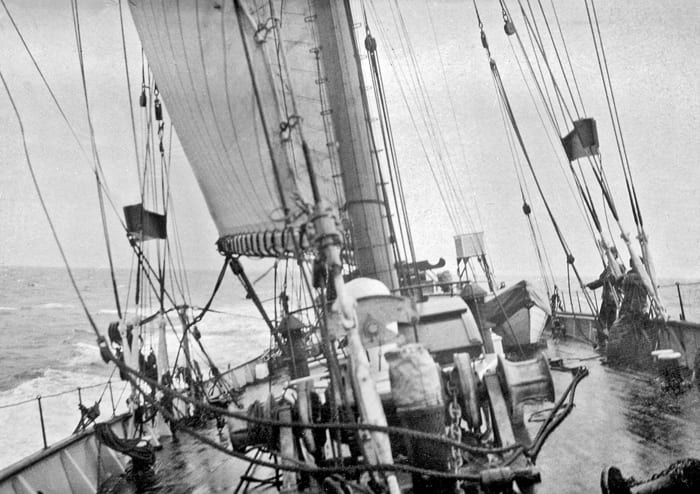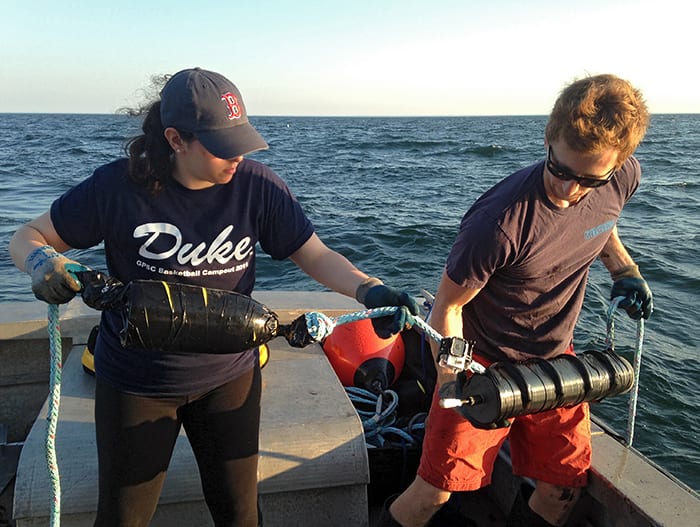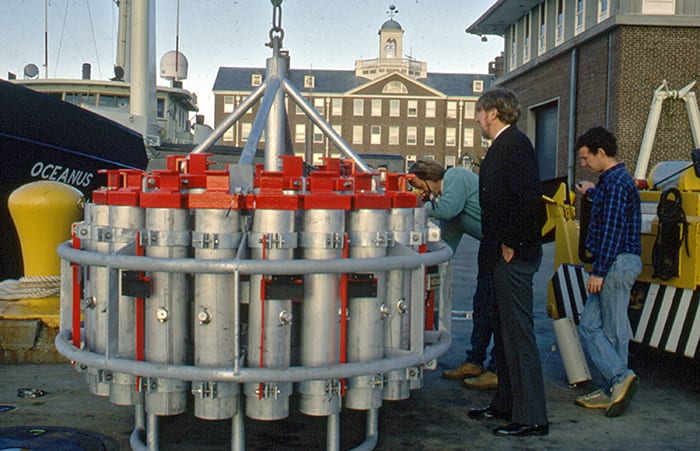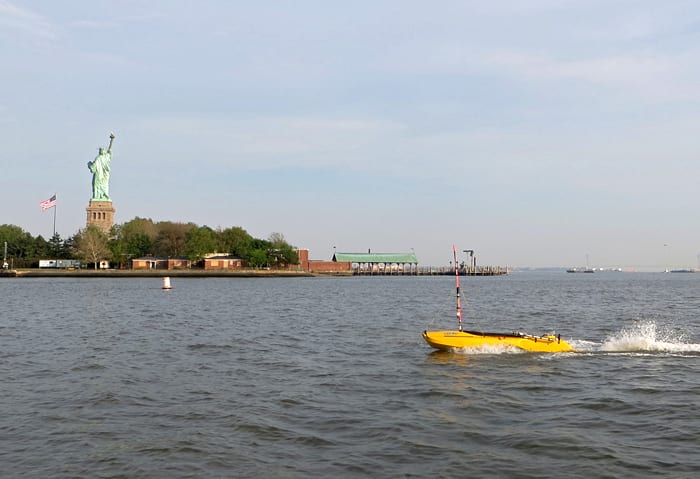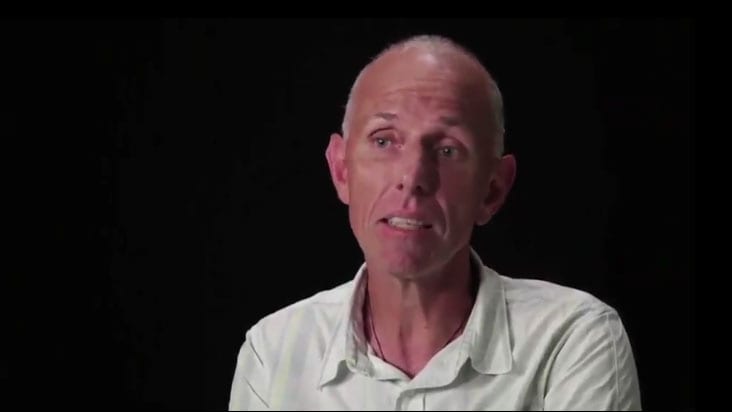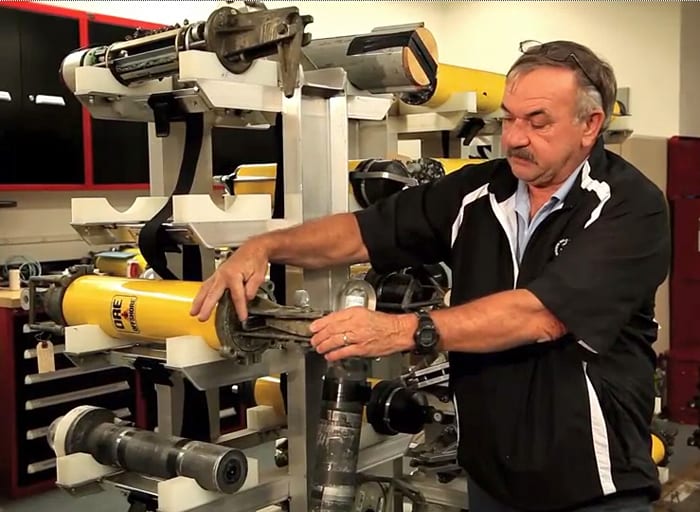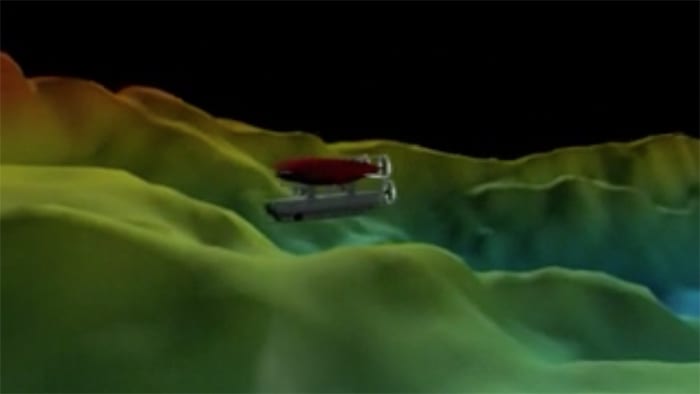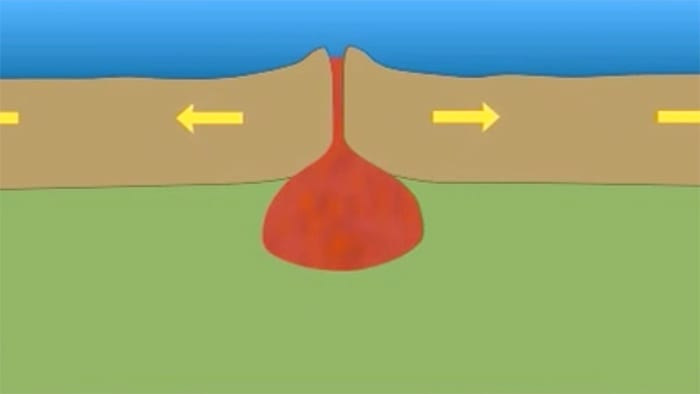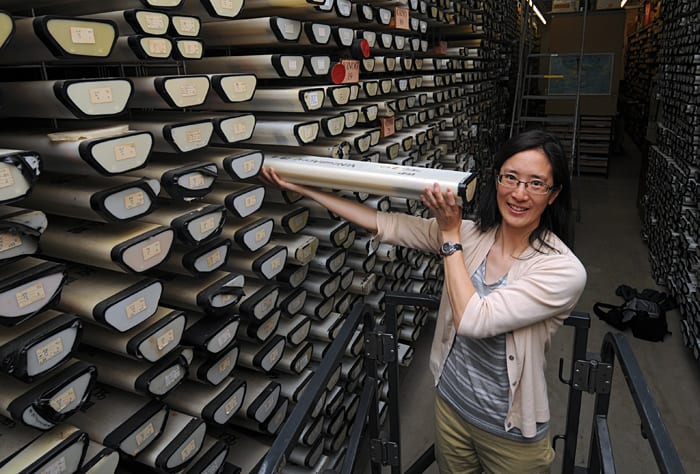Multimedia Items
Summer Scenery
The sights of summer in Antarctica invariably include ice. Researcher Emelia DeForce captured this image of a well-worn iceberg in January 2013, the height of austral summer during a […]
Read MoreSearching for Forams
Visiting graduate student Inge van Dijk looks for minuscule organisms known as foraminifera in sediments from a salt marsh near South Cape Beach on Cape Cod. She brought the tiny […]
Read MoreESP for Red Tides
WHOI engineers Jeff Pietro and Will Ostrom (left to right) deployed a new robotic system from R/V Tioga off New Hampshire to monitor for red tide organisms. […]
Read MoreMarine Mammals Meet Modern Medicine
Whales do not make the easiest patients, but CT scans, MRIs, ultrasound, hyperbaric chambers, and other medical tools are making it easier to learn about them.
By Ari Daniel :: Originally […]
Read MoreQ&A with Tim Shank about Ocean Trenches
WHOI deep-sea biologist Tim Shank answers questions about the deepest places in the world’s oceans: how they are formed, what lives there, why we should understand them in greater detail.
Originally […]
Read MoreSpa Day
Scientists use HOV Alvin’s manipulator arm to collect fluid from a hydrothermal vent about 2,500 meters (8,200 feet) underwater at a site named CrabSpa because the water temperature from […]
Read MoreSpeed Trap
The ocean near the mouth of the Columbia River, known as the “Graveyard of the Pacific,” has experienced an average of just over one shipwreck per year for the past […]
Read MoreClose Quarters
Visit DEEPSEA CHALLENGER
Explorer and filmmaker James Cameron sits on top of DEEPSEA CHALLENGER, the submersible he designed and built to carry him to the deepest spot in the ocean in 2012. One […]
Read MoreAll Ears
MIT-WHOI Joint Program graduate student Nicholas Macfarlane aims a directional VHF antenna from the highest point on a boat operated by CIRCE (Conservación, Información y Estudio sobre cetáceos) in […]
Read MoreBack to the Deep
Scientists and crew recover Nereus, the hybrid remotely operated vehicle (HROV), in 2009 after it swam along a 110-kilometer (68-mile) ridge searching for signs of hydrothermal vents on […]
Read MoreExpanded View
A team from the WHOI Coastal Systems Group traveled to Newfoundland, Canada, in June to gather sediment cores from bays and marshes in the area. Their work is […]
Read MoreA Current Affair
WHOI engineer Jeff Pietro and Scott Worrilow, manager of the WHOI Sub-Surface Mooring Operations Group (left to right), recover a current meter in an experiment led by physical […]
Read MoreDeepest Ocean
Ocean trenches, such as the Kermadec (shown here) near New Zealand, exist where one of Earth’s tectonic plates is sinking and sliding beneath another. This process, referred to as […]
Read MoreA Fluid Science
WHOI scientists-emeriti Jack Whitehead and Stan Hart (left to right) conduct a lab experiment in geophysical fluid dynamics—the fundamental physics of oceans, rivers, magma, atmospheres, and other […]
Read MoreMaiden Voyage
In 1930, the newly established Woods Hole Oceanographic Institution accepted a $175,000 bid by Burmeister & Wain Ltd., of Copenhagen to build the steel-hulled ketch Atlantis. In July 1931, Atlantis […]
Read MoreSun, Sea, and Sound
Working from a small boat off Cape Cod in mid-July, guest student Aimee Boucher (Duke University) and MIT-WHOI Joint Program student Nicholas Macfarlane deploy an acoustic recording device at […]
Read MorePreparing to Blow
Surface Fleet
Version 2 of the autonomous surface vehicle (ASV) “JetYak” went to New York City in June, as the original was headed to Greenland. Both vehicles perform preprogrammed missions that include […]
Read More5 Questions about Sharks
WHOI biologist and senior scientist Simon Thorrold discusses sharks and why they are important to a healthy ocean.
Originally published online January 1, 2013
Read MoreMooring Master
Few people know more about putting moorings into the ocean and getting them back than Scott Worrilow, who arrived at WHOI in 1978 and today is head of the Read More
ABE Animation
Maintaining a constant altitude and precision navigation, ABE is programmed to fly back and forth over the seafloor (which scientists call “mowing the lawn”), surveying the seafloor with sonar to […]
Read MoreCreating New Ocean Crust
(Animation by Jack Cook, Woods Hole Oceanographic Institution)
By Jack Cook, Kristen M. Kusek :: Originally published online September 14, 2007
Read MoreClearing the Waters
WHOI chemist Phoebe Lam retrieves sediment core sample GGC-37, originally extracted by WHOI’s Lloyd Keigwin in 1991, from the Seafloor Samples Laboratory. Sediment cores present geological information and are obtained when […]
Read More
